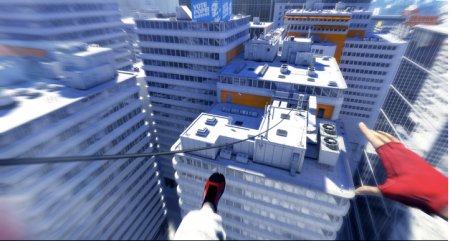
As often happens with hyped-up games, Mirror’s Edge fell short of many people’s lofty expectations. Some complained about its length (I managed to complete the story mode in two solid evenings of gaming). Others criticized the cliché-ridden story, which was seemingly written with the philosophy that: “Sudden betrayals are shocking, the more the better!” However, I think most people would have overlooked these flaws if DICE had managed to nail the gameplay. Unfortunately, Mirror’s Edge is the victim of a compromised vision.
On paper, the gameplay is flawless. The controls are tight and responsive, and the first person perspective rarely interferes with gauging distances and completing jumps. Furthermore, it’s easy to identify which objects are interactive and which are not. Why, then, does the game feel so frustrating? Why is it a constant struggle to figure out which way to go? Leigh Alexander explained it thusly:
I received a really interesting letter from a designer pal of mine who is a little bit fatigued of hearing arguments that hinge on the flaws in the game mechanics. In fact, he says, the mechanics themselves are perfect, the controls work precisely how they’re supposed to, and if players are finding the game frustrating, it’s not because of that. It’s the level design.
I wouldn’t say that the level design in Mirror’s Edge is necessarily terrible. It’s just that it often feels like the game and level designers worked in separate rooms, and never quite arrived at a common vision. As Chris Dahlen put it: “I’d say that its core problem is that it looks like Rock Band 2 but plays like Mega Man 9; you want to settle in and enjoy the thrill, but imagine if Rock Band stopped the song every single time you hit a bum note.” The game feels like a compromise between two ideas, and is worse off for it.
The mechanics indicate that the game designers focused on Faith’s speed and agility. They envisioned the parkour to play like Skate or Tony Hawk’s Pro Skater: choosing a path through the obstacles dynamically while using your reflexes to execute the motions flawlessly. Ramps and pipes are highlighted red from your perspective, facilitating quick decisions. The goal is to never stop; it should be possible to complete a level without losing momentum. Choosing your own path through the wide open rooftops is essential to this vision of the game.
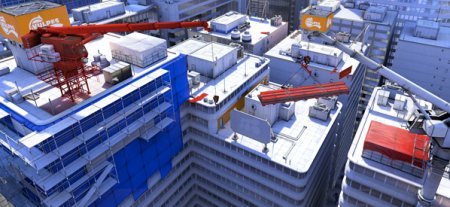
The level designers, however, saw Mirror’s Edge as a puzzle game. It’s up the player to figure out how to get from point A to point B using the environment and Faith’s climbing and leaping abilities. To this effect, they designed lots of indoor pipe puzzles and narrow hallways. They also hid runner’s bags in hard-to-reach areas, and rewarded the player for stopping to pick them up. Careful, calculated movement is the goal.
This disparity is evident in the use of “runner’s vision”, a button which points the player in the right direction. On the rooftops this mechanic works quite well, as the player can usually see a path to the next objective and can plan their route accordingly. In the buildings, however, it often points through walls or in the opposite direction of where you’re really supposed to go. This is likely intentional on the part of the level designers, as it forces the player to observe their surroundings and solve the puzzle.
The guard fights are also a symptom of this design clash. If the goal of the player is to never stop running, then guards become another type of obstacle that must be dispatched and disarmed as quickly as possible. However, many levels force you to eliminate x number of guards before continuing. Faith’s fighting mechanics allow her to take on one or two guards with ease, but forcing her to confront an entire S.W.A.T. team is a recipe for trial-and-error frustration.
Despite my criticisms, I enjoyed Mirror’s Edge a lot more than reviews led me to believe I would. The moments when the game got it right were exhilarating, and Time Trial mode distills the best of the fast fluid parkour gameplay. For its sheer innovation it deserves a spot in your holiday playlist, if only a rental.



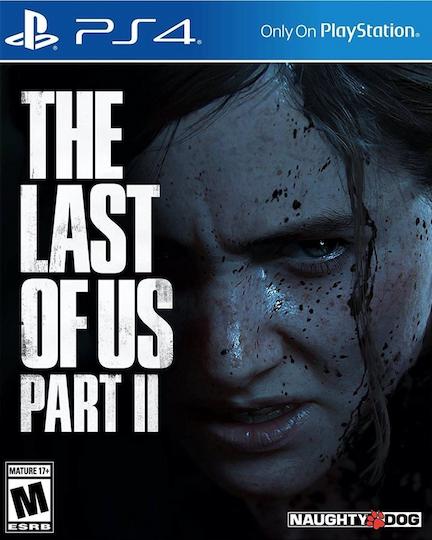

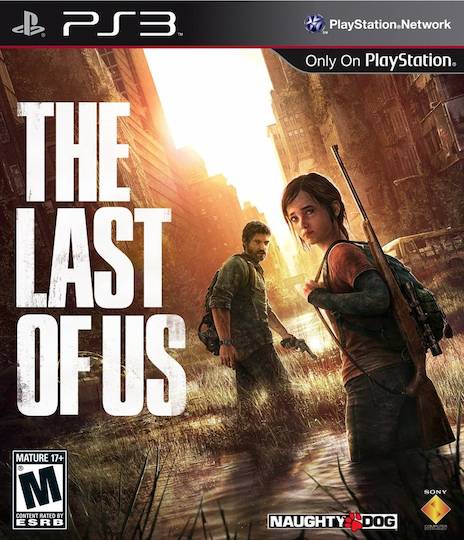
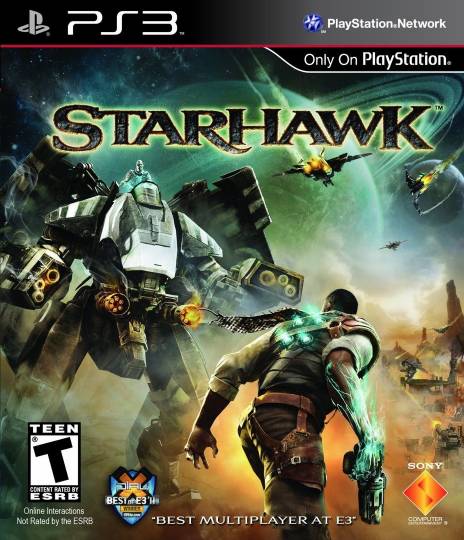
November 30th, 2008 at 7:15 am
I had such high hopes for this game. The best bits of Assassins Creed with none of the downsides. Such a shame that it too apparently suffers from some serious flaws.
I haven’t played it yet, but I’m definitely going to have to at some stage. Thanks for the write-up.
December 1st, 2008 at 10:17 am
“Compromised Vision” is a great phrase that evokes so much, at least for me. Like a post-modern “Shakespearean Tragedy.”
December 2nd, 2008 at 2:00 am
@Ben: For what it’s worth, I thought the climbing in Mirror’s Edge was much better than the climbing in Assassin’s Creed, probably because it was implemented linearly and not in an open-world setting.
@David: No danish princes were harmed in the making of this game ;)
December 2nd, 2008 at 7:10 pm
I don’t know how to add trackbacks — http://graffitigamer.com/?p=228